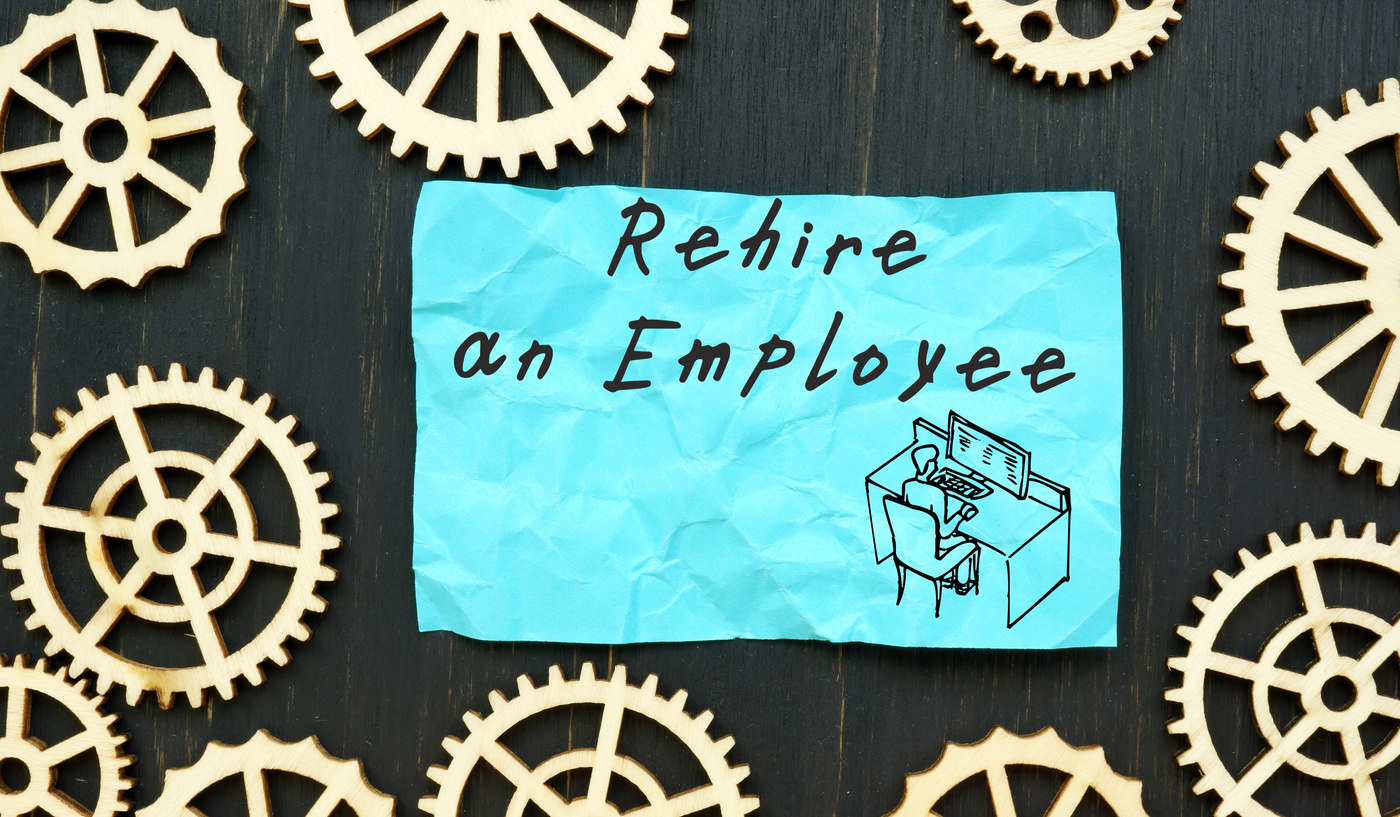Rehiring Employees: What Managers Need to Know
October 3rd, 2023 | 3 min. read

In today's dynamic workplace, employers are looking to both new and proven methods of rebuilding their workforce.
One historically proven way of doing so is by rehiring ex-employees. With that, comes the challenge of deciding how, when and who to rehire after furloughs and layoffs.
In 2020, the COVID-19 pandemic forced employers around the country to find ways to reduce their staff, in order to not only save money but their business as well. For many business owners, this meant layoffs and furloughs. In 2023 and 2024, facing economic uncertainty and the realities of prior downsizing, employers are again looking to ways to re-staff in economically-smart ways. Here is what you will learn:
- How to Rehire Past Employees
- Avoiding Discriminatory Rehiring Tendencies
- Create a Rehiring Policy
- Communicate and Keep Furloughed Employees Up-to-Date
- A Note on the Paycheck Protection Program (PPP)
How to Rehire Past Employees
When it comes to rehiring laid-off or furloughed employees, there are certain things that every employer and manager should know.
First, there is a core difference between layoffs and furloughing employees, especially as companies seek to bring workers back.
While it can be helpful to contact an HR provider for modern talent acquisition solutions, the first thing managers need to know is the difference between a layoff and a furlough.
What is a Furloughed Employee?
Furlough is a temporary leave, so a furloughed employee is an employee on temporary leave. Recalling these employees is fairly easy, comprised simply of reactivating the payroll process for the people coming back.
What is a Laid-Off Employee?
A layoff, on the other hand, is a bit more complicated. Some laid-off employees probably received severance packages. Employers might request that people returning to work after a layoff repay the compensation they received from the severance package.
Avoiding Discriminatory Rehiring Tendencies
Deciding which employees to rehire and which employees to permanently cut ties with is never an easy decision. The potential risk for lawsuits regarding wrongful dismissal, at other times referred to as termination or discharge, makes it even more difficult.
It’s illegal for employers to make hiring decisions based on:
- Protected classes, including:
- Race
- Age
- Gender
- Religion
- And more
It should go without saying that you should not discriminate during the rehiring process. It is critical that managers understand all kinds of discrimination laws and the impact they have on the rehiring process.
Important to note, however, is that there’s potential for employees to view your decisions to be unlawful, even if you have good intentions and no matter how educated you are regarding discrimination law.
Create a Rehiring Policy
To help avoid lawsuits regarding discrimination in the rehiring process, managers should create a policy detailing how they will determine which employees to rehire.
Some information that will help employers create a more comprehensive rehire policy includes:
- Detailing exactly how you plan to rehire past employees
- Be sure to note that decisions will be made based on company needs and employee skills, at the least
- Notice requirements
- Specifically, these requirements should outline the time frame and required information to respond to a recall notice
- It should also outline any requirements for posting a recall notice
- The impact of furlough
- Specifically, the impact on things like leave accrual and other benefits
- Recall rights
- Specifically, the employer should specify the amount of time in which an employee has recall rights
- How to handle employees who are not coming back to work
- Specifically in regards to benefits payouts for things such as vacation time
Communicate and Keep Furloughed Employees Up-to-Date
As you begin to bring back furloughed employees, it’s important to maintain a line of communication with them. In reality, it is best to maintain continuous communication from the start of the furlough process.
Employers should be as transparent with these workers as they are with the employees they rehire early on.
A Note on the Paycheck Protection Program (PPP)
The Paycheck Protection Program (PPP) was created by the U.S. government to provide funds to small businesses for payroll costs, mortgage or rent payments, and utility expenses in order to support employers affected by the pandemic, It was a loan that can be fully forgiven if the employer can maintain or quickly rehire employees to the same level they had prior to the pandemic.
However, the Paycheck Protection Program (PPP) ended on May 31, 2021. Existing borrowers, however, may be eligible for PPP loan forgiveness.
Final Thoughts on the Rehiring Process
Some companies may decide not to bring back certain employees after they’ve been laid off or furloughed. If this is the case, tell them so as soon as possible.
When rehiring employees, make sure to follow all legal regulations to avoid potential lawsuits or fines.
While the rehiring process is still a great way to rebuild your workforce it can still be tricky without the right tools. Managers and employers may want to try using a modern hiring and onboarding solution.
For any employers who are struggling with rehiring employees, Payday HCM may be in a position to help. To see how we are already helping countless businesses in New Mexico and across the country with their rehiring struggles, contact us today.
Keith Edwards is a graduate of the United States Military Academy at West Point and a former U.S. Army Captain. He has over 34 years of leadership experience in government, financial services, manufacturing, retail, and non-profit organizations. He assists businesses in improving the bottom line through increased efficiency in payroll processing, time and attendance, employee benefits, and human resources. His goal is to allow your business to focus on revenue-producing activities instead of non-revenue-producing activities to allow business leaders to sleep better at night knowing they are protected from threats related to compliance and tax/financial issues in the areas of payroll and HR.


